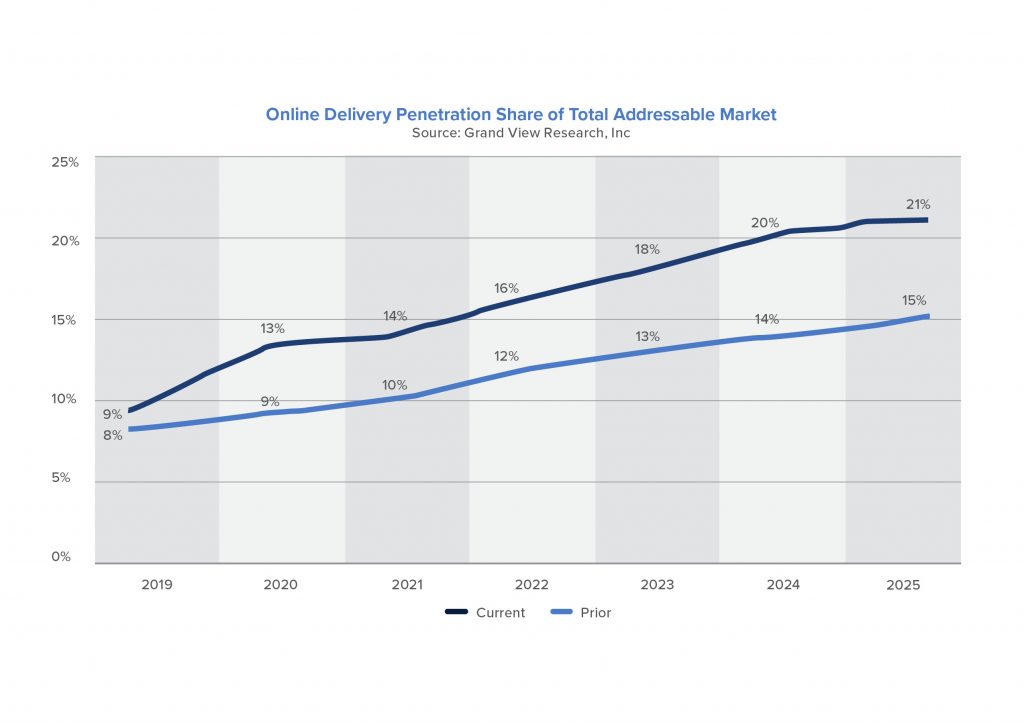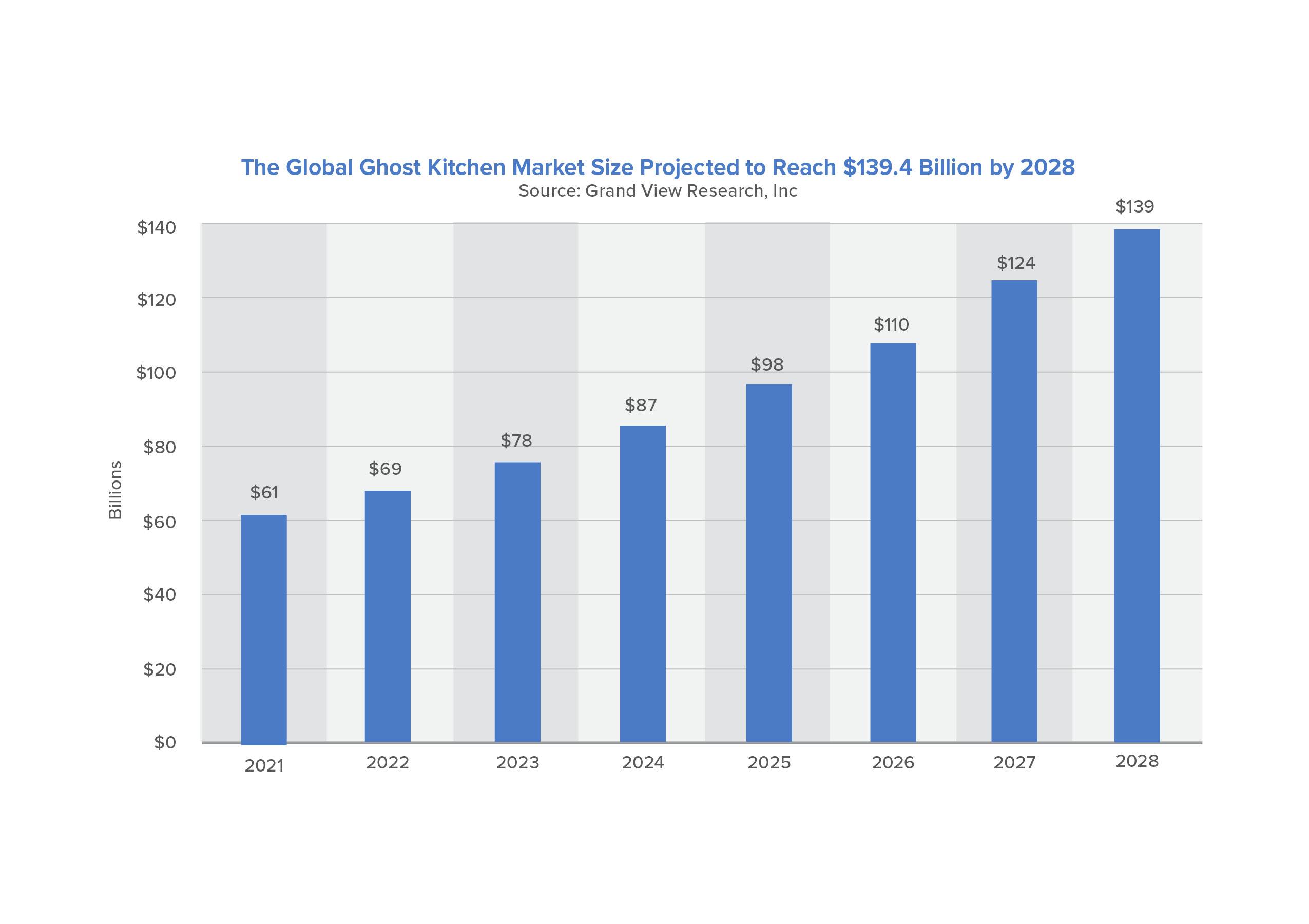What Is a Ghost Kitchen?
COVID-19 significantly impacted the restaurant industry and how it operates. Between the pandemic, inflation, supply chain issues, and labor shortages, restaurants found new ways to cut operating costs. One of those ways is moving operations to a ghost kitchen business model.
A ghost kitchen or virtual restaurant are spaces for operators to create food for off-premises consumption.
Offering all the amenities and labor, virtual restaurant concepts continue to grow in popularity as they provide a helping hand to both small and large restaurants. Ghost kitchens are helping revive the restaurant industry by navigating new consumer preferences, including delivery logistics, technology, and branding. Currently, it’s projected that 21 percent of restaurant orders will be delivery orders by 2025 — a 40 percent increase on their pre-pandemic forecast of 15 percent.

How Ghost Kitchens are Adapting
With indoor dining back in full swing, some ghost kitchens have transitioned into full-service restaurants or food halls to expand their customer reach. These concepts create additional space and access for pick-ups and deliveries while accommodating customers in person.
Many major national restaurant chains have also turned to ghost kitchens because of their low capital investment. Ghost kitchens require less overhead — especially upfront— making it easier to start and operate a restaurant. They are less likely to require outside the capital, and they can be launched in substantially less time.
The mounting popularity of ghost kitchens is still growing, with the market projected to reach $139.4 billion by 2028.

Key Players in the Ghost Kitchen Market
Amped Kitchens, which was founded in 2014, operates multi-tenant commercial kitchen buildings in Los Angeles and Chicago with more than 100,000 sq. ft. in each city, comprising 110 kitchens in Los Angeles and 64 kitchens in Chicago. Additionally, Wendy’s plans to open 700 new ghost kitchens by 2025, while Chipotle, Five Guys, The Burger Den (Denny’s), and even retailers like Walmart and Kroger have entered the space in ways that make sense for their businesses.










